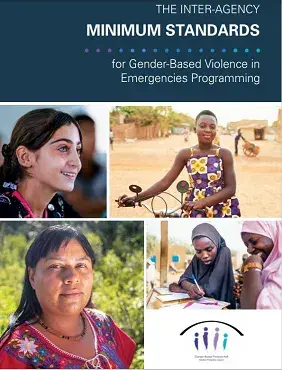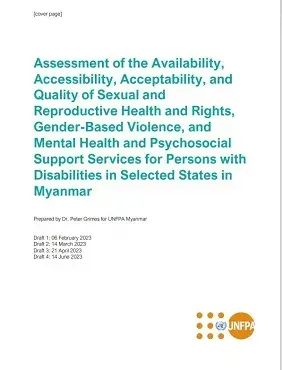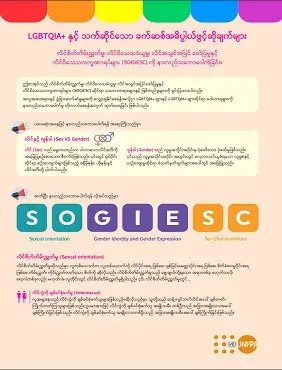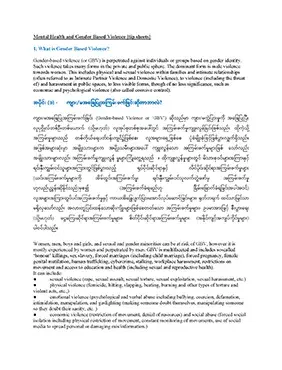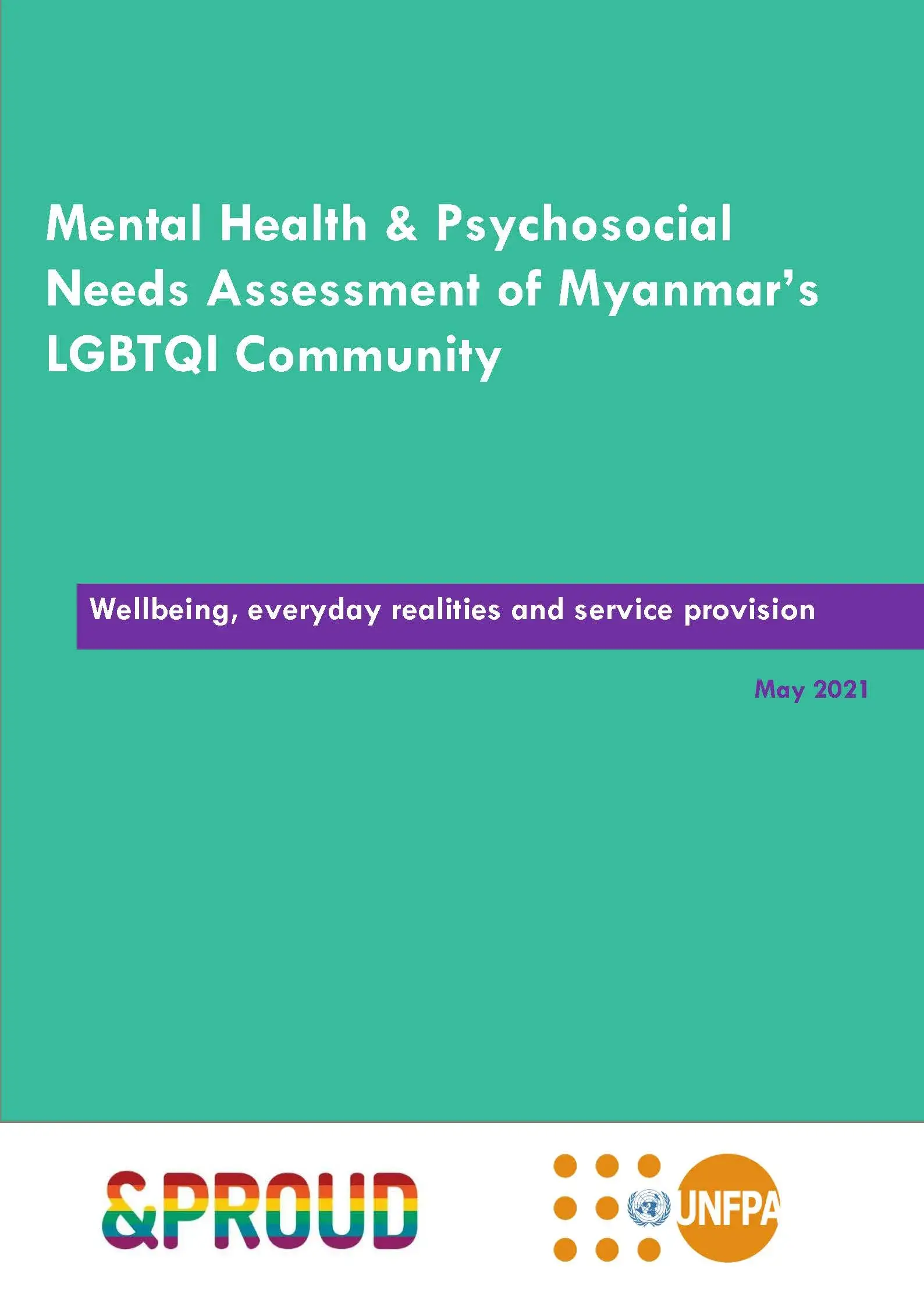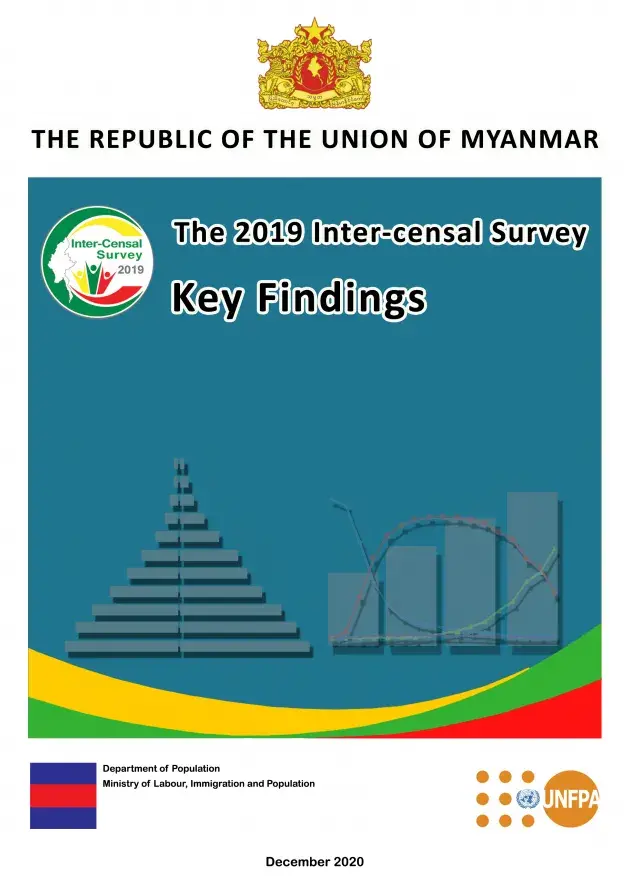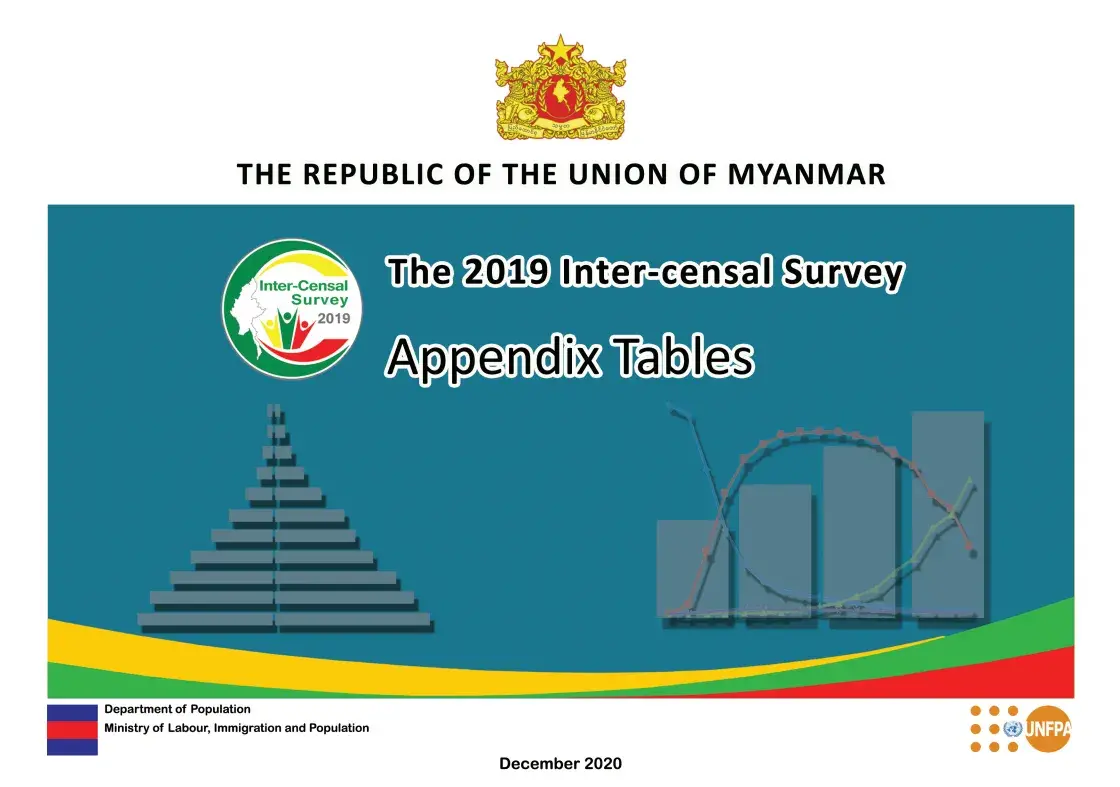Publications
Publications
Publication
The inter-agency minimum standards for Gender-Based Violence in Emergencies Programming
This GBV Minimum Standards aims to enhance accountability among GBV-specialized actors, improve programme quality, and guard against practices that may cause harm (e.g., put surviv...
Read more
Publication
Assessment of the Availability, Accessibility, Acceptability, and Quality of Sexual and Reproductive Health and Rights, Gender-Based Violence, and Mental Health and Psychosocial Support Services for Persons with Disabilities in Selected States in Myanmar
Assessment of the Availability, Accessibility, Acceptability, and Quality of Sexual and Reproductive Health and Rights, Gender-Based Violence, and Mental Health and Psychosocial Su...
Read more
Fact Sheet
Tip sheet on GBV and MHPSS
GBV and MHPSS Tip Sheet is available in English and Myanmar language.
Read more
Publication
Myanmar Gender-Based Violence (GBV) Hotline Minimum Standards
During the 16 Days of Activism against Gender-Based Violence, UNFPA is launching the Myanmar Minimum Standards for Gender Based Violence (GBV) Hotlines (available in English and ...
Read more
Publication
Mental Health & Psychosocial Needs Assessment of Myanmar’s LGBTQI Community
Mental Health & Psychosocial Needs Assessment of Myanmar’s LGBTQI Community Wellbeing, everyday realities and service provision
Read more
Publication
The 2019 Inter-censal Survey Key Findings
THE REPUBLIC OF THE UNION OF MYANMAR The 2019 Inter-censal Survey Key Findings
Read more
Publication
The 2019 Inter-censal Survey Appendix Tables
THE REPUBLIC OF THE UNION OF MYANMAR The 2019 Inter-censal Survey Appendix Tables
Read more

